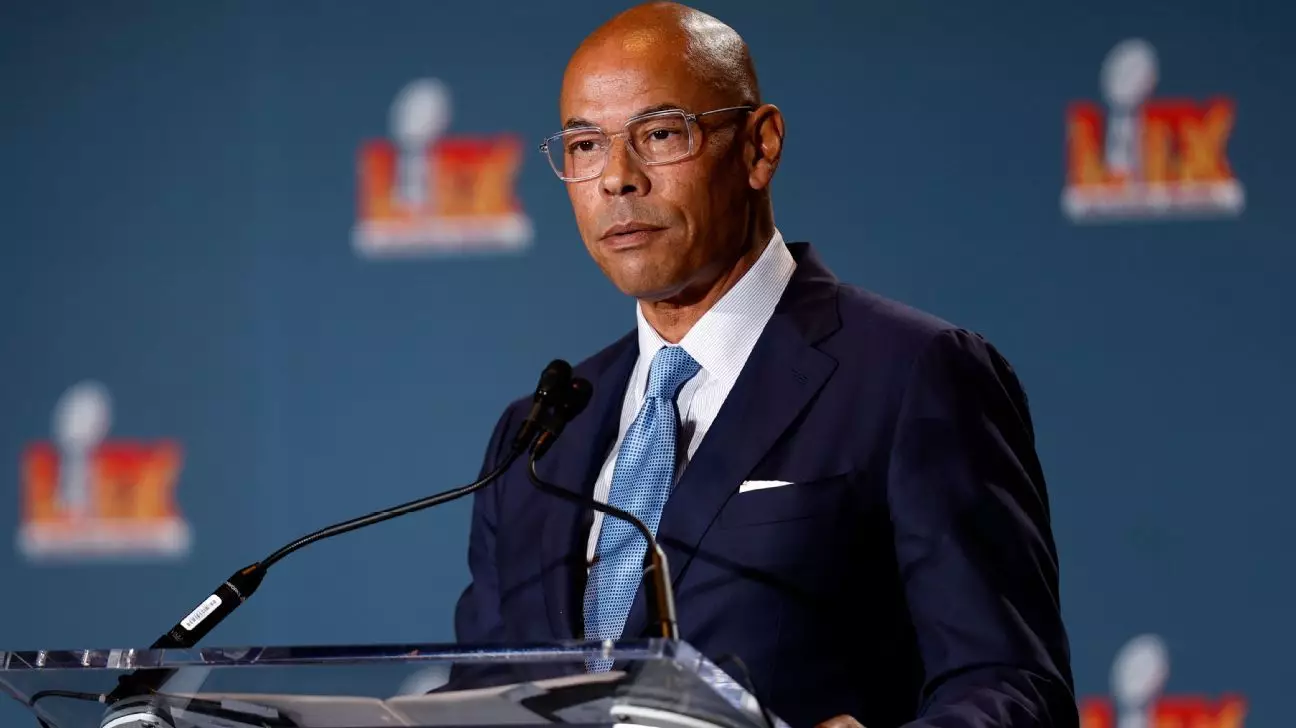In recent weeks, the NFL Players Association (NFLPA) has found itself at the crossroads of public reassurance and underlying internal conflict. The Executive Committee’s unequivocal backing of Executive Director Lloyd Howell Jr. appears, on the surface, to reaffirm confidence in his leadership. Yet, beneath this veneer of solidarity lies whispers of unease—a tension that reveals the fragile nature of trust within one of the league’s most influential players’ institutions. This disconnect signals not just a leadership crisis but also a broader reflection on how organizations manage transparency and internal dissent.
What stands out here is the vehement rejection of rumors suggesting Howell’s resignation, coupled with assurances of a meticulous review process. Such public gestures, however, often serve as smoke screens, masking deeper issues about accountability and governance. When a union, representing some of the most scrutinized athletes in sports, resorts to fortified public deflections, it raises questions about legitimacy. Are these statements enough to quell doubts internally and externally? Or do they merely delay inevitable reckonings about the core integrity of NFLPA’s leadership?
This scenario echoes a common pattern in organizational crises—initial denial followed by prolonged introspection. Deep down, the NFLPA’s credibility hinges on its capacity for transparency, especially when addressing allegations that could erode the union’s moral authority. Regardless of the official stance, the internal dispute about Howell’s private sector involvement hints at potential conflicts of interest that may threaten the union’s operational independence and its reputation for championing player rights.
The Intricacies of Conflicts and Ethical Dilemmas
The heart of the controversy lies in Howell’s alleged sideline role as a part-time consultant for Carlyle Group, a private equity firm seeking minority NFL franchise ownership. While Howell contends he is exercising due diligence and claims concerns stem from a “union employee,” such distinctions often fail to satisfy public or internal scrutiny. The appearance of a conflict of interest, especially given Howell’s influential position at NFLPA, risks undermining the union’s credibility in negotiations and legal battles.
This situation opens a Pandora’s box about how unions and leaders handle conflicts of interest, particularly when financial and professional boundaries blur. It’s one thing to engage in outside activities; it’s altogether another to do so without full transparency or clear guidelines. Trust in leadership is contingent upon perceived honesty and the absence of conflicts that could influence decision-making. The NFLPA’s attempt to manage this controversy quietly reflects a common trap—trying to contain a problem instead of confronting it openly.
Furthermore, the confidentiality surrounding the arbitration process compounds the issue. Keeping the details of a pivotal ruling about league conduct under wraps involved serious questions about accountability. Such secrecy may protect the league’s reputation temporarily but ultimately damages trust when revelations eventually surface, as they did through investigative journalism. The union’s decision to appeal the arbitration ruling demonstrates an ongoing fight to uphold its perceived independence but also illustrates the difficulty of balancing legal strategy with transparency.
Leadership Under Fire in the Power Arena
What makes this controversy particularly compelling is the broader context of Howell’s leadership transition. Handpicked to replace a long-standing figure in DeMaurice Smith, Howell inherited a federation grappling with complex issues—player rights, legal battles, and now, internal governance doubts. His ascent symbolizes a fresh start, but the current turbulence underscores how fragile new leadership can be when existing structures and ethical doubts collide.
The NFLPA’s response—hiring outsider counsel and pledging to meticulously review Howell’s activities—appears to be an attempt to regain footing amid these storm clouds. Yet, such measures might serve more as window dressing than as genuine attempts at reform. Atletiming to safeguard their own image, leaders often fall into the trap of prioritizing optics over substantive change. The true test of Howell’s leadership will be whether he allows genuine transparency and accountability to guide the union’s future actions.
Beyond strategic moves, this saga emphasizes an enduring truth: that trust is the foundation of any union’s power. When internal conflicts threaten to fracture that trust, the entire organization risks losing its voice and influence. For the NFLPA, navigating this crisis with honesty and resolve may be the only path to reclaiming authority and ensuring that internal scandals do not derail their fundamental mission—serving the best interests of the players.
Ultimately, the NFLPA’s current predicament underscores the importance of integrity in leadership. As public scrutiny intensifies and internal doubts simmer beneath the surface, the union’s ability to confront its challenges head-on will determine whether it emerges stronger or continues to drift into disarray. Leadership is not just about making powerful decisions; it’s about fostering an environment where transparency, ethics, and accountability are non-negotiable. The NFLPA now faces that defining test.

